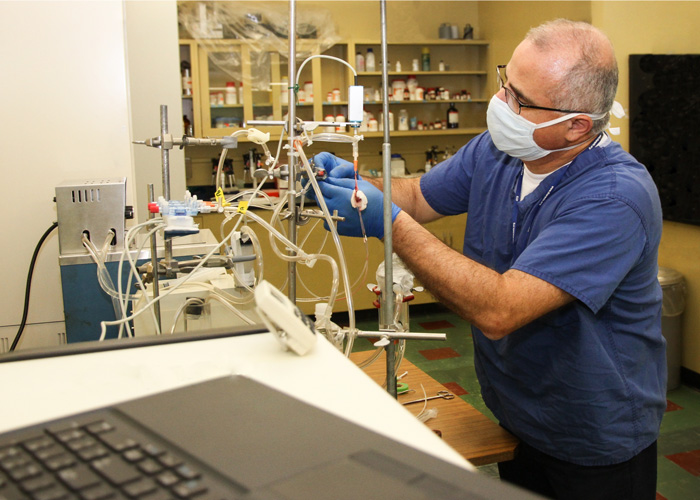Richerson Dissertation Abstract
Investigating Neurodegeneration in Hemodialysis Patients Using Functional Cerebrovascular and Structural MRI
Dissertation Date: September 29, 2022
The purpose of this dissertation research was to improve understanding of the neurodegenerative mechanisms underlying cognitive decline in hemodialysis (HD) patients using MRI. HD patients have increased rates of cognitive impairment and abnormalities on cerebral MRIs relative to age matched controls. HD is the most common form of renal replacement therapy and involves circulating the patient’s blood out of the body into a dialyzer to filter out uremic toxins and remove excess fluid before returning it to venous circulation. The fluid removal and the circulatory stress of HD can cause hypovolemia and downstream decreases in systemic blood pressure. HD patients also typically have existing vascular disease from comorbidities such as hypertension and diabetes. This vascular disease can impair regulation of cerebral blood flow (CBF) in response blood pressure changes. Anemia secondary to kidney disease results in an upregulation in CBF which could exhaust vasodilatory reserve at rest and impair the CBF response to intradialytic hypotension. The theoretical framework for this dissertation is that during HD, the interaction between declining blood pressure and vascular disease results in a decline of CBF and oxygen delivery to the brain which summates over time to produce brain injury and accelerated neurodegeneration in HD patients. We explored the concept that the combination of HD and impaired vascular capacity leads to brain damage in HD patients in two MRI studies. The first was a longitudinal study in which we collected diffusion weighted imaging (DWI) and resting state functional MRI (fMRI) at baseline and one year later. In addition, intradialytic clinical variables such as blood pressure, ultrafiltration rate and cerebral oximetry (ScO2) were collected quarterly. The second study was a pilot cross-sectional study collecting anatomical images, DWI, breath hold fMRI for mapping cerebrovascular reactivity (CVR) and arterial spin labeling to calculate baseline CBF across the brain in both age-matched controls and HD patients. In a cross-sectional analysis from data collected in the first study, we found MRI evidence of morphological and microstructural changes typical of brain injury in HD patients relative to a control dataset. HD patients demonstrated gray matter atrophy and DWI evidence of a loss of white matter integrity compared to controls. Decreases in diffusion indices of white matter integrity were associated with decreased cognitive performance in the HD group. Using the novel method of characterizing CVR from resting state fMRI data in the first study, we found that lower CVR and greater blood pressure decline were correlated with greater decline in ScO2 during dialysis. This study supported the proposed theoretical framework for brain injury in HD patients. Finally, in the first study we also found declines in DWI markers of microstructure over a one-year period, the first study to detect such changes. Evidence for loss of white matter integrity was strongest in tracts associated with watershed territories of the brain, indicating that damage is most likely in regions with vascular vulnerabilities. DocuSign Envelope ID: A57CAA64-6B0B-4125-A1FA-12177E70B079 In Process In the second study, a multi-shell DWI acquisition was performed, allowing the implementation of a more advanced diffusion model, the mean apparent propagator. We found the mean apparent propagator model for DWI provided additional insight into microstructural properties of brain tissue in HD patients and was less susceptible to motion during acquisition. In the second study we also explored CVR and CBF in controls and HD patients and characterized the spatial relationship between deficits in CVR and CBF with deficits in brain structure as measured by anatomical and DWI MRI. We were unable to find significant group differences in CVR or CBF in our pilot study, owing largely to difficulties in obtaining quality data in HD participants. We did find expected spatial relationships between cerebrovascular and structural deficits in some HD patients, warranting further exploration. Overall, we found that HD patients have brain structural deficits that increase over time and that declines in oxygenation during dialysis could be related to vascular disease and vasodilatory deficits. Future studies with quantitative vasodilatory stimuli would provide additional insight into this model of brain damage in HD patients.
Return to Dissertation Schedule


